Set like a jewelled crown on the map of India, Kashmir is a multi-faceted diamond, changing its hues with the seasons - always extravagantly beautiful.
Two major Himalayan ranges, the Great Himalayan Range and the Pir Panjal, surround the landscape from the north and south respectively. They are the source of great rivers, which flow down into the valleys, forested with orchards and decorated by lily-laden lakes.
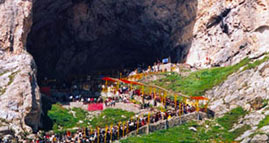
Amarnath-Eminent-Travels-jammu J&k Amarnath-Shiva, in the form of a lingam, is formed naturally of an ice - stalagmite. One of the holy trinity, Shiva is a living god. The most ancient and sacred book of India, the Rig Veda evokes his presence in its hymns.
Vedic myths, ritual and even astronomy testify to his existence from the dawn of time.
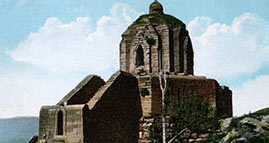
The sacred temple of Shankaracharya occupies the top of the hills known as Takht-I-Sulaiman in the south-east of Srinagar. The site dates back to 250BC. The philosopher Shankaracharya stayed at this place when he visited Kashmir ten centuries ago to revive Sanatan Dharma.
Before this date, the temple was known as Gopadri, as an earlier edifice on the same site was built by king Lalitaditya in the 6th century AD.

Hazratbal Mosque is located in a village of the same name on the banks of the Dal. Its pristine white marble elegance is reflected in the waters of the lake. Hazratbal's special significance is derived from the fact that it houses a hair of the prophet Muhammad.
This is displayed to the public on religious occasions, usually accompanied by fairs. Apart from these occasions, Friday prayers are offered at Hazratbal and attended by throngs of people.
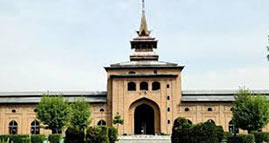
The Jama Masjid at Nowhatta, in the heart of the old city, is the other important mosque in Srinagar at which thousands of people congregate for the Friday prayers. Of imposing proportions, the mosque is built around a courtyard and is supported by 370 wooden pillars.
The hushed quiet of the mosque counterpoints the bustle of the old bazaars surrounding it.
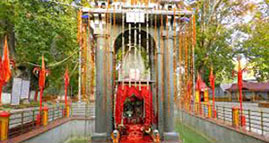
The Goddess Ragnya Devi is symbolised as a sacred spring at Tula Mula village, 27 kms from Srinagar. Within the spring is a small marble temple. The devotees of the goddess fast and gather here on the eighth day of the full moon in the month of May when, according to belief, the goddess changes the colour of the spring's waters.
The temple-spring complex is affectionately known as Kheer Bhawani because of the thousands of devotees who offer milk and 'kheer' to the sacred spring, which magically turns black to warn of disaster.
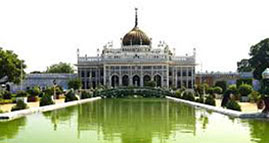
Hasanbad Imambara-Eminent-Tours-and-Travels-jammu J&kImambara Hassanabad is the 2nd oldest shrine and is a world famous place of mourning and worship of one million shia population of J&K is Imambara Hassanabad situated in south west of city centre Lal Chowk.
The Imam Bargah is surrounded by world famous Hazratbal shrine one side, Temple of Mata Sharka Devi and Gurdawara Chatti Padshahi on other side.
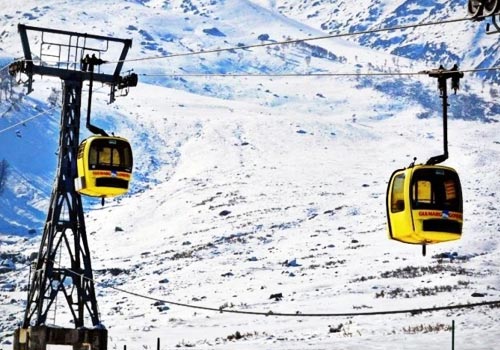
Gulmarg is 57 km southwest from the capital city of Srinagar and is close to the Indo-Pakistan border.Gulmarg a prime location in the state of Jammu & Kashmir is about 52 Kms. from Srinagar, the capital of Jammu & Kashmir.
At an altitude of 2,653 m., Gulmarg is exquisitely situated in a pine surrounded basin of the Pir Panjal range. Gulmarg or the `Meadow of Flowers' is a lovely blooming sight where an opulence of flora displays various colours with the changing seasons.
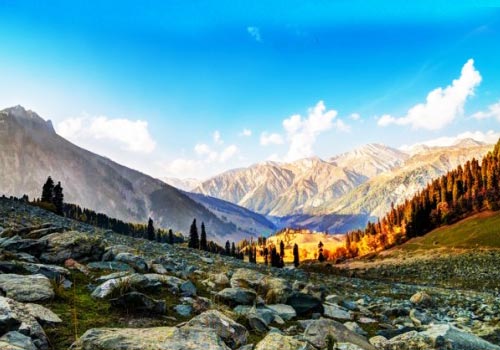
Sonamrg-Eminent-Tours-and-Travels-jammu J&kThe passage to Sonamarg is through the Sindh Valley which presents yet another bewitching facet of countryside in Kashmir. Situated at an altitude of 2,740 m.
Sonamarg literally means the 'Meadow of Gold' and although this could be due to the profusion of flowers that wraps the meadow in the spring it is also possible that the name originates from Sonamarg's decisive trading position in the days when this was a main route into central Asia.
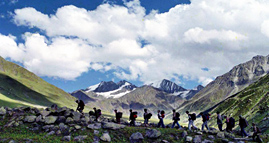
In the state of Jammu & Kashmir Pahalgam is situated at the junction of the streams flowing from Sheshnag Lake and the Lidder river. Pahalgam (2,130 m) was once a humble shepherd's village with astounding views.
Today, Pahalgam is Kashmir's prime tourist resort. It is cool even during the height of summer when the maximum temperature does not exceed 25 degree C. Pahalgam is bountiful with many places of interest, and because the resort is set between fairly steep hills, it is worth hiring a pony rather than walking.
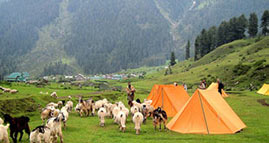
Aru is a grassland surrounded by a gorge on one side. Aru is a beautiful shaded valley of the Lidder river. Encircling and protecting Aru, are the conifer spread mountains with occasional flash of high, snow-covered peaks rising against the blue sky.
The one of the most beautiful hill resort of Kashmir is still, serene and idyllic.
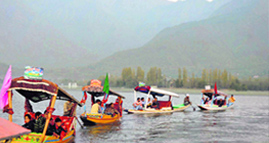
The Dal Lake which has the length of 8 Km long and a width of 4 Km, spreads over a total of 26 Sq. Km. The fascinating Dal Lake is divided into two smaller ones the Lokut (small) and Bod (big) Dal.
The south western part of the lake has a maximum depth of approximately 12 M. the Dal Lake gets some of its water from spring but is also supplemented by water from the mountain lake, Mar Sar.
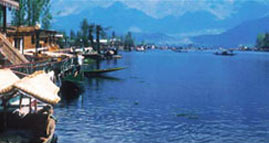
Wular Lake in Srinagar is located between the towns of Bandipore and Sopore approximately 60 kilometers from the city of Srinagar. This beautiful lake spreads over an area of over 125 square kilometers and is one of the largest fresh water lakes in Asia.
The one very distinguishing feature of the Wular Lake is that it changes character after every few miles of its course. Wular lake in Srinagar is a perfect example of natural beauty at its best without any artificiality.
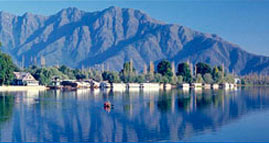
Leading from the Dal is the smaller Nagin Lake. Trees of willow and poplar whose reflection is mirrored in the lake edge the waters. One can hire Bathing Boats here, as well as on the Dal along with the exciting water-skis and motor launches.
There are Shikaras to be hired for an unbelievably romantic experience.
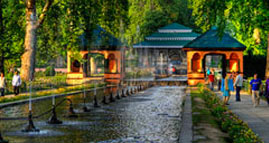
Shalimar Bagh-Eminent-Tours-and-Travels-jammu J&kBuilt by Emperor Jehangir for his wife Nur Jehan, Shalimar, 15 kms from the TRC, is a beautiful garden with sweeping vistas over gardens and lakes, and shallow terraces. The garden is 539 m by 182 m and has four terraces, rising one above the other.
A canal lined with polished stones and supplied with water from Harwan runs through the middle of the garden.
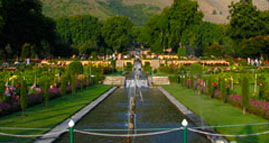
Situated on the banks of the Dal Lake, with the Zabarwan Mountains as its backdrop, (11 km. from TRC), this 'garden of bliss' commands a magnificent view of the lake and the snow capped Pir Panjal mountain range which stands far away to the west of the valley.
Nishat was designed in 1633 AD by Asaf Khan, brother of Nur Jehan.
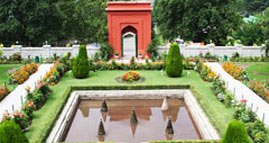
Chasma Shahi-Eminent-Tours-and-Travels-jammu J&kAt Chashmashai, is a tastefully laid garden in terraces, which commands a magnificent view of the Dal Lake below and surrounding mountain ranges. The cool water of the spring is highly refreshing and digestive. The original garden was laid out by Shah Jehan in 1632 AD.
TRC Srinagar free of cost to visit the permits can be had from the infromation Counter Chashma Shahi Garden. Permits can be had from the infromation counter.
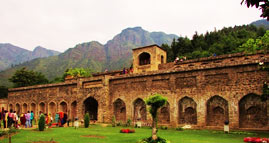
Once the royal observatory, Pari Mahal has a charmingly laid out garden and is a five-minute drive from Cheshmashahi. A Buddhist monastery at one time, it was converted into a school of astrology by Dara Shikoh, Mughal Emperor Shah Jehan's eldest son.
Situated on the spur of a mountain overlooking the Dal, the ancient monument, with a well-laid spacious garden in front, is connected to Cheshmashahi by road. It is illuminated at night.